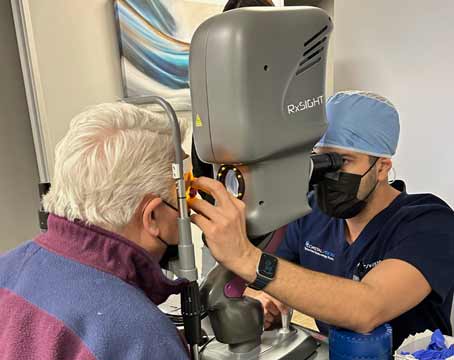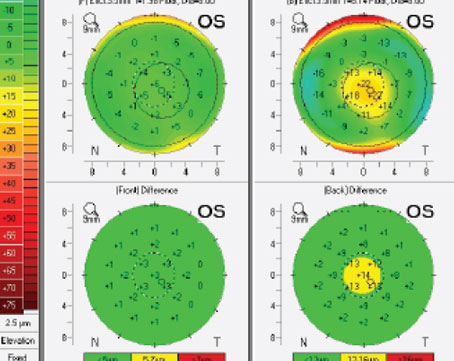Refractive surgeons usually are wise to avoid overcorrecting an excimer laser patient, because it would mean blurry vision, removal of excess tissue and the need for a second surgery to treat the overcorrection. However, several surgeons have found there may be a situation when an overcorrection not only isn't an adverse event, it's a necessary part of a successful outcome. Here's an update on this procedure that seems to be helping some presbyopes regain useful near and distance vision.
The Procedure
The approach is based on a technique discussed by Roberto Pinelli, MD, of
San Diego
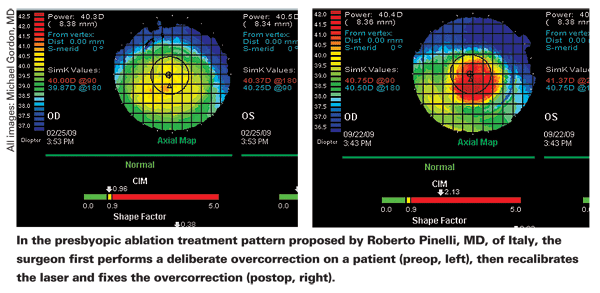
Dr. Gordon says the procedure is fairly simple, and involves first inducing an overcorrection of around 1.5 D, in either a myopic or hyperopic presbyope, and then coming back and treating that overcorrection. "You essentially create a prolate cornea that has increased depth of field via negative spherical aberration," says Dr. Gordon.
"For example, if you had a +1 D hyperope, you'd treat him as a +2.5 D hyperope, and then treat the resulting -1.5 D error using a different optical zone. For a -1 myope, I'd treat him as a -2.25 or -2.5, and then come back and treat the hyperopic overcorrection at a different optical zone. Typically, the myopic zone is 5.5 mm and the hyperopic zone is 6 mm." The patient can have some astigmatism, as long as the spherical equivalent is between +3 D and -5 D. A poor candidate is anyone who wouldn't be a candidate for normal LASIK or PRK, in other words someone with severe dry eye, a patient whose topography is abnormal, or someone with unrealistic expectations.
The Results
Dr. Gordon says the procedure can help patients get some functional vision for daily tasks, but doesn't work miracles. "You don't want someone coming in and expecting to have 20-year-old eyes again or to be able to thread a needle," he says.
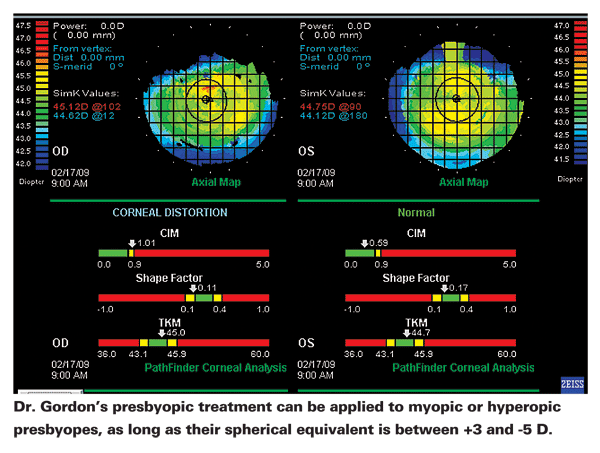
In Dr. Gordon's practice, he says that 100 percent of his presbyopic ablation patients see 20/30 or better at distance and 95 percent of these see J3 or better at near. Seventy percent of the patients can see J2 or better. "I think most of these patients postop are comfortable enough with their near vision that they can function really well other than sitting down to read a book for three hours straight or threading a needle," says Dr. Gordon. "When they're out and about, they can use their cell phone or computer and read a menu."
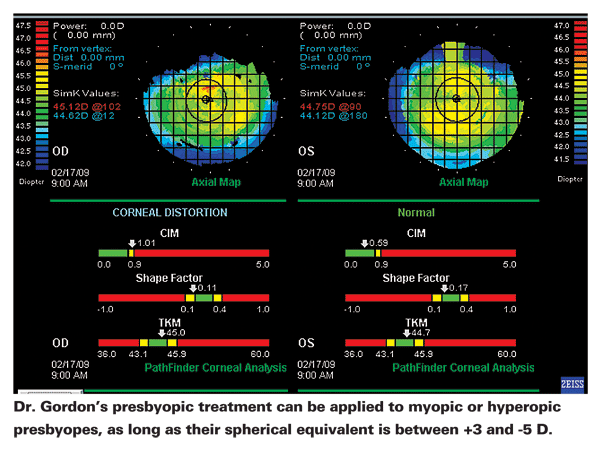
Since the procedure doesn't try to create a bifocal cornea, Dr. Gordon says patients don't have any more problems with night vision or halos than a typical LASIK patient would have. "You're really creating an optically superior prolate shaped cornea," he avers. "Not a bifocal cornea. Because of that fact, I think these patients don't have increased symptoms."
To get the best results, Dr. Gordon says he uses punctal plugs in all of these patients, since they tend to get more dry-eye symptoms postop. Also, he says it's key to keep the illumination consistent as you wait for the laser to recalibrate between the two different treatments. "You don't change the lighting because you want the pupil to remain the same," he says. "You don't want a centroid shift. Other than that, you'll find the procedure is fairly straightforward."
1. Pinelli R, Ortiz D, Simonetto A,
et al. Correction of presbyopia in hyperopia with a center-distance, paracentral-near technique using the Technolas 217z platform. J Refract Surg 2008;24:5:494-500.

